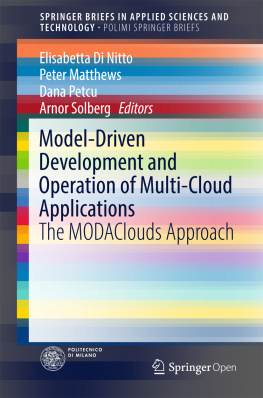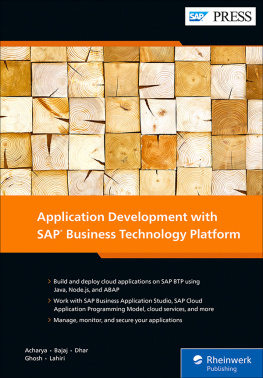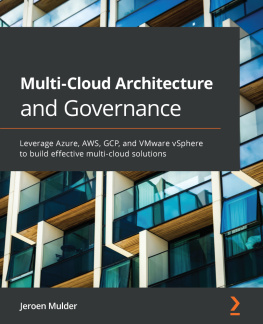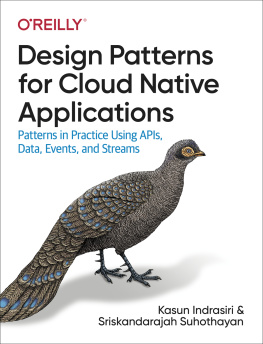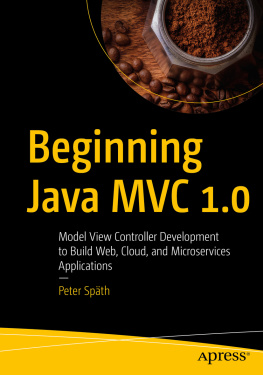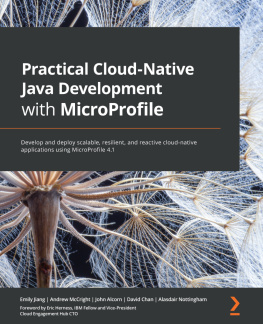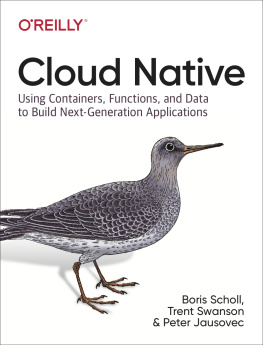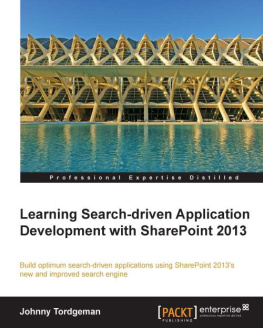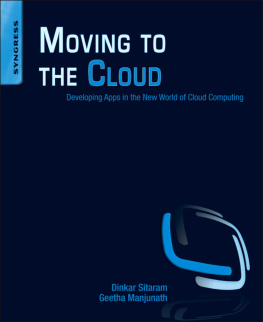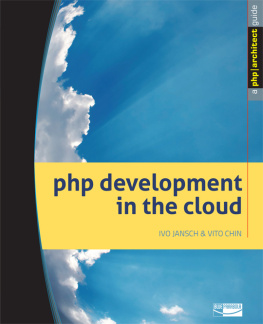Elisabetta Nitto Peter Matthews Dana Petcu - Model-driven development and operation of multi cloud applications: the
Here you can read online Elisabetta Nitto Peter Matthews Dana Petcu - Model-driven development and operation of multi cloud applications: the full text of the book (entire story) in english for free. Download pdf and epub, get meaning, cover and reviews about this ebook. City: Cham, year: 2016, publisher: Springer International Publishing, genre: Computer. Description of the work, (preface) as well as reviews are available. Best literature library LitArk.com created for fans of good reading and offers a wide selection of genres:
Romance novel
Science fiction
Adventure
Detective
Science
History
Home and family
Prose
Art
Politics
Computer
Non-fiction
Religion
Business
Children
Humor
Choose a favorite category and find really read worthwhile books. Enjoy immersion in the world of imagination, feel the emotions of the characters or learn something new for yourself, make an fascinating discovery.
- Book:Model-driven development and operation of multi cloud applications: the
- Author:
- Publisher:Springer International Publishing
- Genre:
- Year:2016
- City:Cham
- Rating:5 / 5
- Favourites:Add to favourites
- Your mark:
- 100
- 1
- 2
- 3
- 4
- 5
Model-driven development and operation of multi cloud applications: the: summary, description and annotation
We offer to read an annotation, description, summary or preface (depends on what the author of the book "Model-driven development and operation of multi cloud applications: the" wrote himself). If you haven't found the necessary information about the book — write in the comments, we will try to find it.
Model-driven development and operation of multi cloud applications: the — read online for free the complete book (whole text) full work
Below is the text of the book, divided by pages. System saving the place of the last page read, allows you to conveniently read the book "Model-driven development and operation of multi cloud applications: the" online for free, without having to search again every time where you left off. Put a bookmark, and you can go to the page where you finished reading at any time.
Font size:
Interval:
Bookmark:
- Vendor Lock-in []. Cloud providers offer proprietary solutions that force Cloud customers to decide, at the early stages of software development the design and deployment models to adopt (e.g., public vs. hybrid Clouds) as well as the technology stack (e.g., Amazon Simple DB vs. Google Bigtable).
- Risk Management . There are several concerns when selecting a Cloud technology such as payment models, security, legal and contractual, quality and integration with the enterprise architecture and culture.
- Quality Assurance . Cloud performance can vary at any point in time. Elasticity may not ramp at desired speeds. Unavailability problems exist even when 99.9 % up-time is advertised (e.g., Amazon EC2 and Microsoft Office 365 outages in 2011).
- Deliver an advanced software engineering model-driven approach and an Integrated Development Environment (IDE) to support systems developers in building and deploying applications, together with related data, to multi-Clouds spanning across the full Cloud stack (Infrastructure as a Service, shortly IaaS, Platform as a Service, shortly PaaS, and Software as a Service, shortly SaaS).
- Define quality measures, monitoring mechanisms, prediction models, and adaptive policies to provide quality assurance in Clouds and multi-Clouds.
- Provide support to costs and risks analysis to increase trust in Clouds.
- Develop an integration framework between design tools and run-time.
- Create relevant and complex case studies for the entire risks assessment and software engineering methodologies.
- Analyze and validate project outcomes through case studies.
- Ensure distribution of project results via dissemination activities on relevant publication channels, training, and standardization.
- Provide community-based open source solutions supporting the full applications life-cycle.
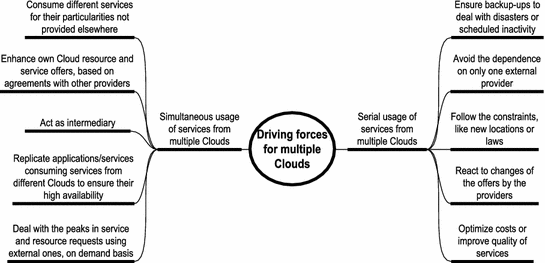
- It needs to develop a solution that can be executed on a broad spectrum of customers IaaS/PaaS, also supporting Cloud bursting, that is, the ability to move part of the system on a different Cloud to manage pick of traffic when needed.
- It must develop a flexible architecture for the system so that it could be adapted to new Cloud offers emerging in the next 510 years to adapt to changes of context and requirements.
- It needs libraries and connectors to integrate various data storage tools and services to address different needs in terms of performance, data locality, scalability and the like.
Font size:
Interval:
Bookmark:
Similar books «Model-driven development and operation of multi cloud applications: the»
Look at similar books to Model-driven development and operation of multi cloud applications: the. We have selected literature similar in name and meaning in the hope of providing readers with more options to find new, interesting, not yet read works.
Discussion, reviews of the book Model-driven development and operation of multi cloud applications: the and just readers' own opinions. Leave your comments, write what you think about the work, its meaning or the main characters. Specify what exactly you liked and what you didn't like, and why you think so.

